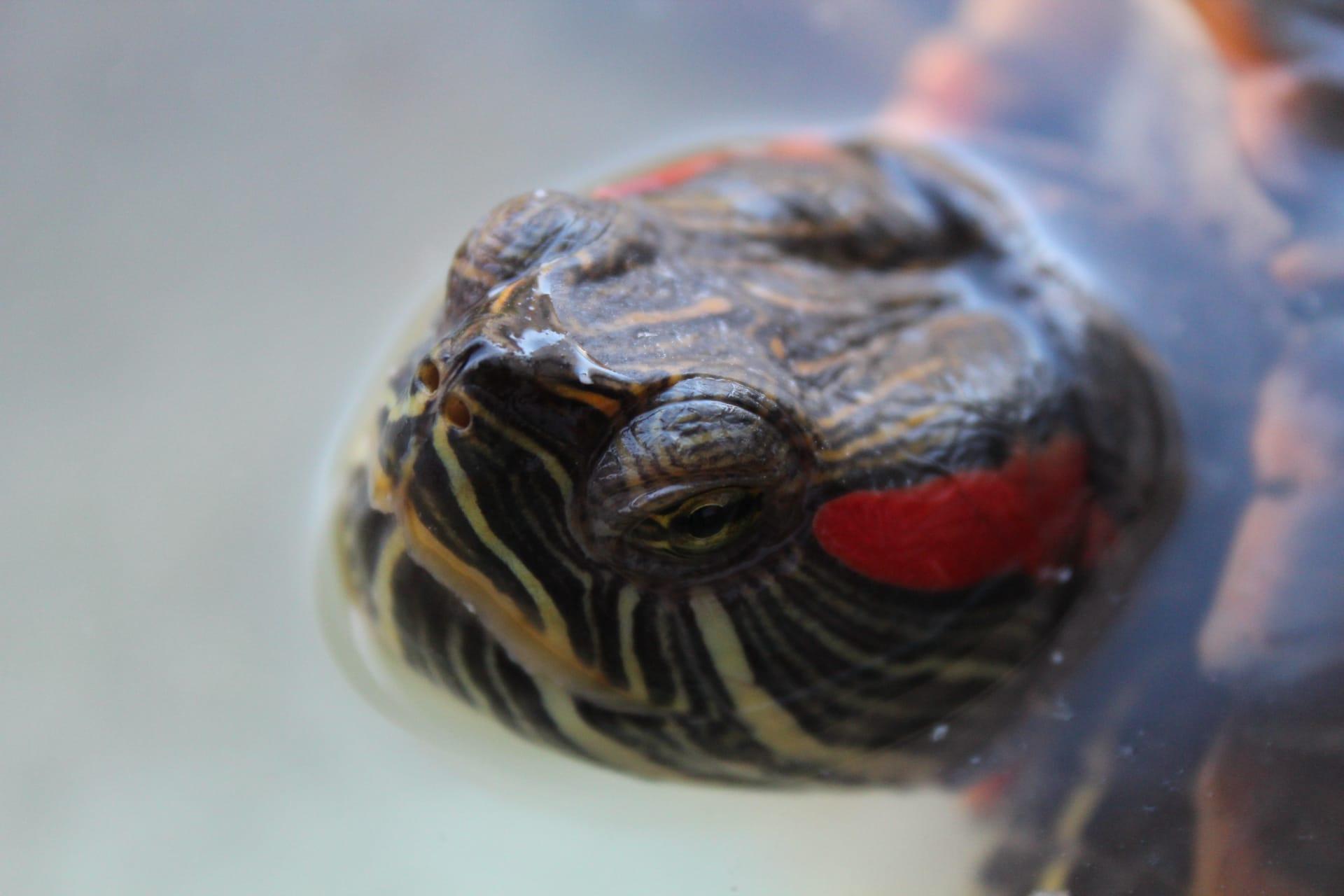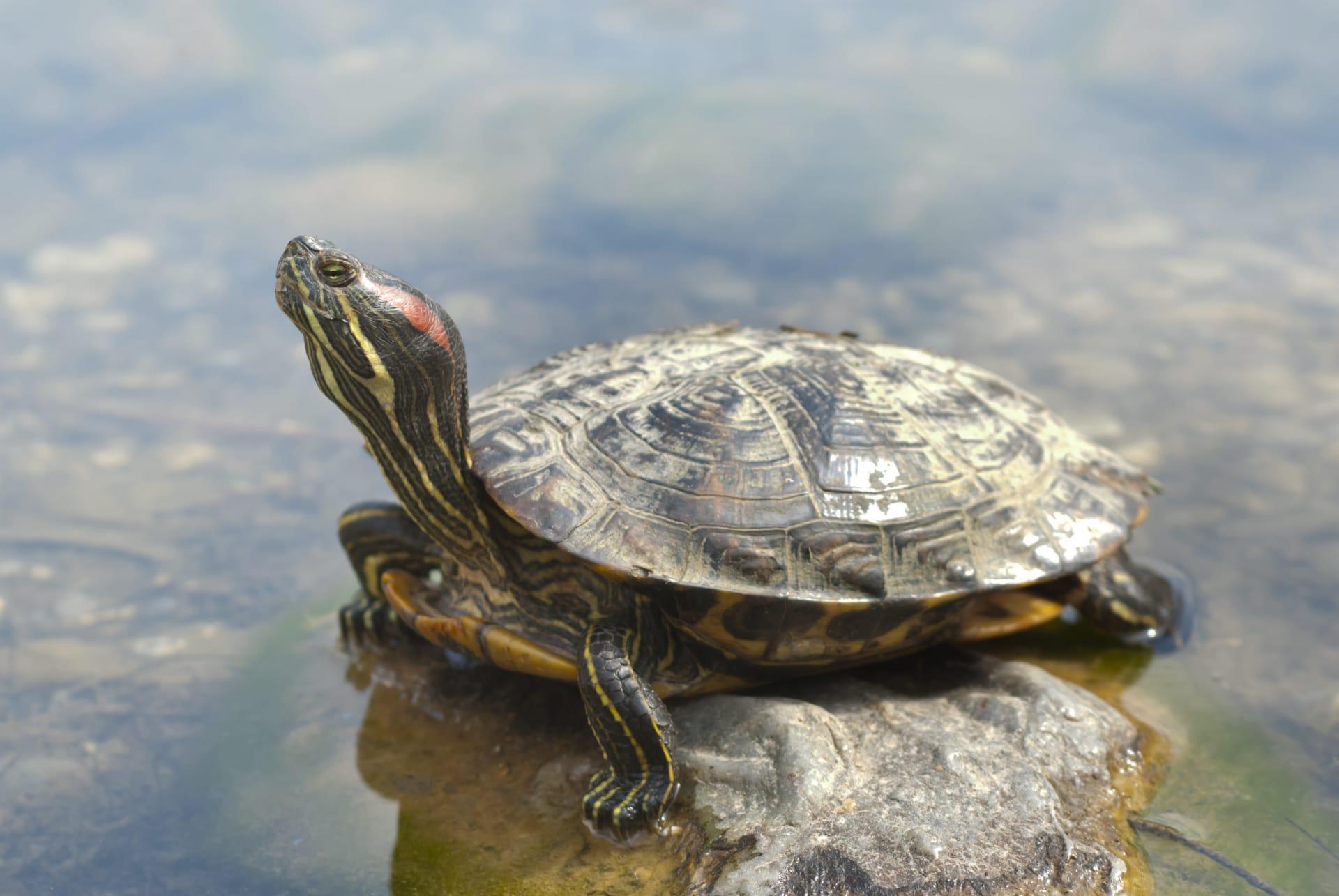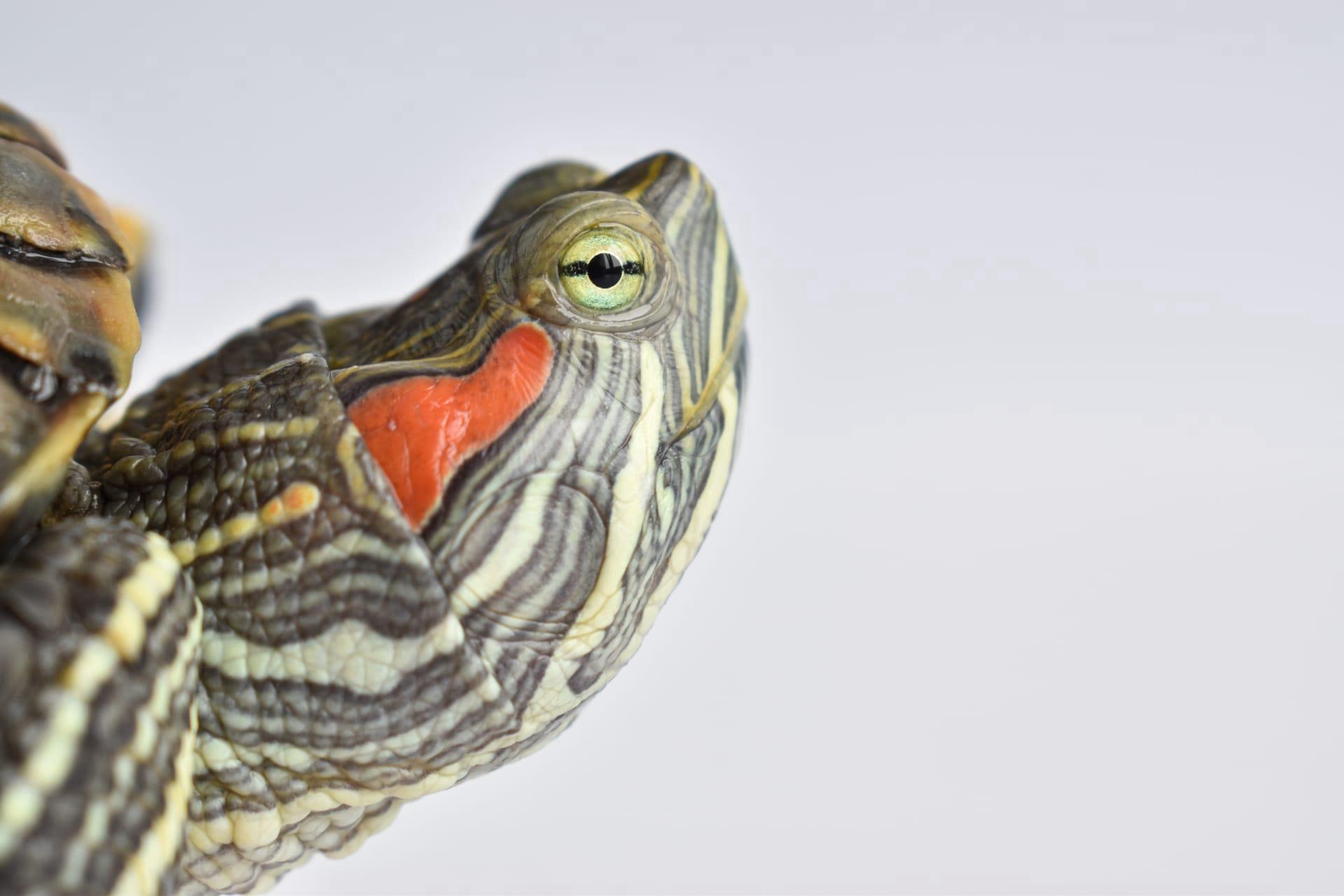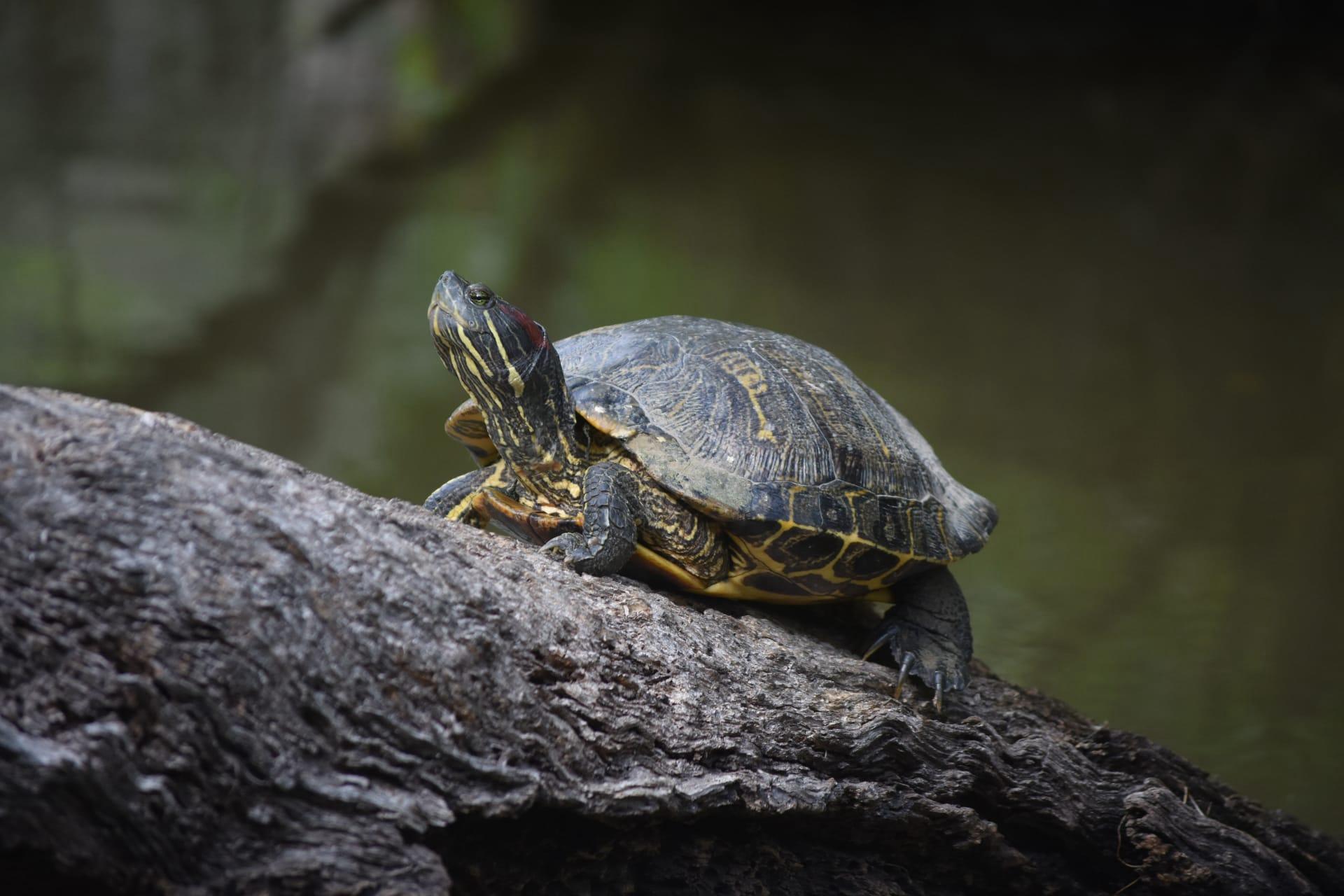Red Eared Slider
- Home /
- Mini Encyclopedia /
- Animal /
- Red Eared Slider
1
The Red Eared Slider (Trachemys scripta elegans) belongs to the family Emydidae, which comprises various species of turtles. This particular species, characterized by distinctive red marks around its ears, is a subspecies of the Pond Slider (Trachemys scripta). Scientifically, it's categorized under the class Reptilia, order Testudines. They're known for their hard shells, which protect them from predators, and webbed feet, ideal for swimming.
Originally native to the southeastern United States, the Red Eared Slider has become a global species. Their natural habitat ranges from the Mississippi River basin to the Gulf of Mexico, thriving in warm, slow-moving waters like rivers, streams, and ponds. However, due to their popularity as pets and subsequent release into the wild, they are now found worldwide. This introduction has led to them being considered invasive in many regions, including parts of Europe and Asia, where they compete with native species for resources.

2
Question: Do Red Eared Sliders change color as they age?
Answer: This is a common misconception. Red Eared Sliders do not change their overall color as they age, but their markings and skin tone can vary. Young sliders typically have more vibrant colors, with distinct red ear markings and bright green shells. As they mature, these colors may fade slightly, and the shell can develop a more muted, darker hue. However, the fundamental coloration remains consistent throughout their life. These changes are subtle and are more indicative of the turtle's age and health rather than a shift in actual color.

3
Red Eared Sliders have evolved several survival strategies to thrive in their environments. They are excellent swimmers, using their webbed feet to navigate waters with ease. This skill is crucial for foraging, avoiding predators, and seeking optimal basking spots. Basking is another key survival tactic, as these turtles need to absorb heat and UVB rays for healthy shell growth and metabolism.
Another survival strategy is their omnivorous diet, which includes a wide range of food sources like aquatic vegetation, insects, and small fish. This dietary adaptability allows them to survive in diverse environments. Additionally, Red Eared Sliders are known for their hard shells, which provide protection against predators and harsh environmental conditions. This shell, made of bone covered by keratinous scutes, is a key defense mechanism.

4
In the ecosystem, Red Eared Sliders play a role as both predator and prey. As predators, they help control populations of their prey, which includes insects, small fish, and aquatic plants. This predation helps maintain a balanced ecosystem. However, they can also impact native species negatively, especially in non-native habitats, by competing for food and basking spots.
Their role as prey is also significant. Eggs and juvenile sliders are often preyed upon by birds, mammals, and fish, which helps control their population and supports the food chain. In their native habitat, this predation-prey relationship is balanced, but in non-native areas, their adaptability and resilience can lead to overpopulation, disrupting local ecosystems.

5
Film: "The Secret World of Turtles and Tortoises" (United States, 2011) offers an insightful look into the lives of various turtle and tortoise species, including the Red Eared Slider. This documentary explores their behavior, habitats, and the challenges they face in the wild and in captivity.
Book: "The Guide to Owning a Red Eared Slider" (United States, 2005) by David G. Derrick provides a comprehensive overview of caring for these popular pets. It covers topics like diet, habitat, health issues, and the environmental impact of releasing them into the wild.
Book: "Turtles of the United States and Canada" (United States, 2009) by Carl H. Ernst and Jeffrey E. Lovich includes detailed information on the Red Eared Slider. This book offers extensive insights into their biology, behavior, and conservation, making it an invaluable resource for enthusiasts and researchers alike.